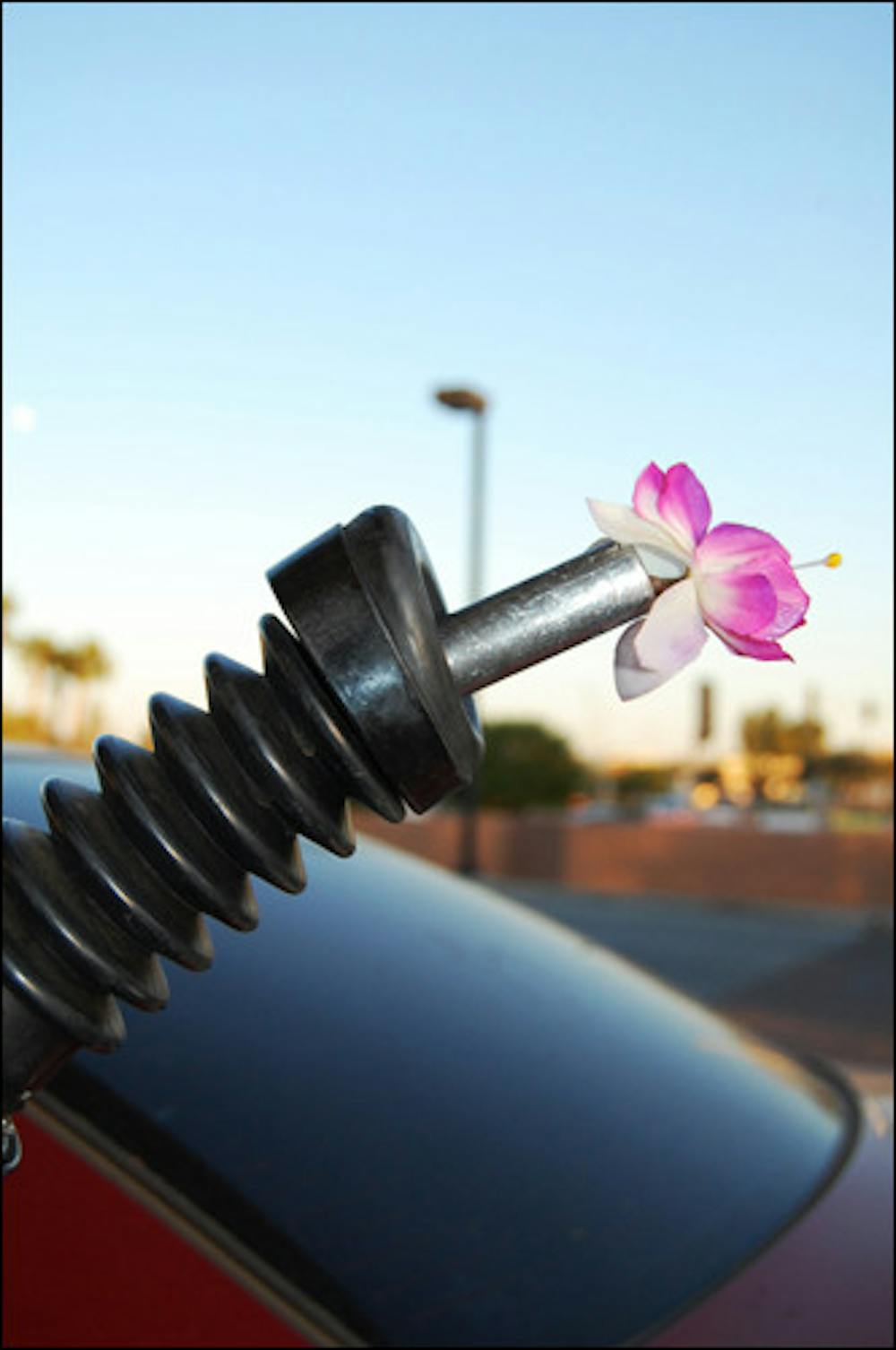Energy-efficient vehicles fight the difficult battle of trying to be green as they still release emissions into the environment. However, a select few do the job a little better than some.
Omar Chaudhry, an elementary education senior, drives a 2000 Honda Civic GX he’s had since 2005. The car runs on compressed natural gas or CNG.
“I like having it, I really do,” he says. “The only real downside to it is you’ve really got to consider how far away from the city you can go.”
CNG is a fossil fuel serving as a replacement for other fuels as the emissions produce environmentally cleaner greenhouse gases.
Chaudhry says there really is no difference compared to another car.
“You fill it up a little bit differently, but driving-wise it’s the same thing,” he says.
Chaudhry fills up at public natural gas fueling stations but admits to it kind of being a pill.
Arizona has five public fueling stations: at the Arizona Department of Administration, Cartwright Unified School, Sky Harbor Airport west and east, Washington Elementary School District and Empire Power Systems.
The CNG in his car is “generally, about 90 percent methane,” Chaudhry says. “There are a couple other gases that give it a smell just in case it does leak, which it never has.”
Chaudhry says he thinks it’s worth it to own a CNG vehicle. “Considering that I spend all my time in the city,” he says.
Chaudhry will only propose getting a CNG vehicle to others under certain conditions.
“If they live where it’s actually feasible to do it, I recommend doing it,” he says. “Frankly, it’s a hell of a lot cheaper.”
To register his car for two years it costs Chaudhry 32 dollars. “I spend about 20 dollars a week on gas and I still drive about 400 miles a week,” he says, “and I can ride in the HOV lanes any time I want.”
Chaudhry says he likes the fact that it is better than gas in terms of environmental impact.
“It would be nice if there were more cars on the market that produced less emissions than standard gasoline cars,” he says, “but it would also be nice if some of the cars available in other markets that did not even run on gasoline were also available in Arizona.”
Chaudhry’s car isn’t even easily distinguished as an alternative-fueled vehicle.
“It’s a standard size Civic,” he says. “From the outside, if you didn’t look at any of the markings that say natural gas on there, you’d think it’s just another Civic.”
Another choice for fuel efficiency is the Smart fortwo. Although it looks as though anyone can just about kick one over, this car is resourceful and inexpensive.
This one won’t be so hard to fill up.
“It runs on gasoline,” says Alex Wolfe of sales at Smart Center Chandler. She says the gas mileage is 33 miles to the gallon with city driving and 41 miles to the gallon on the highway.
Because of the exceptionally low exhaust emissions, the fortwo is considered an ultra-low emission vehicle. According to the Web site at smartusa.com, “an electric pump blows fresh air into the exhaust port when the engine is cold to almost completely oxidize the carbon monoxide and hydrocarbons and render them harmless.”
“It was first produced in 1998,” Wolfe says, “and the United States is the 37th country to carry the car.”
Smart Center Chandler is currently the only place to get a smart fortwo in Arizona. The car costs between $12,000 and $17,000 and comes in three models. Each car is coated with water-soluble paints in black, white or red.
Wolfe says sales are good. “We have a little over 600 cars out on the road,” she says.
The goal for Smart Center Chandler is always to get more cars on the road, “definitely as gas gets more expensive,” Wolfe says.
Popularity-wise, the star of the fuel-efficient show is still the Toyota Prius.
“You usually get about 45 to 47 miles to the gallon but it depends on how you drive of course,” Matt Miller, 22, assistant service manager at Avondale Toyota, says.
“Some people swear that they can get over 60 miles to the gallon,” he says, “but those are the people who take forever to get to speed.”
Miller says the Toyota Prius costs about $24,000 to $26,000 and the wait for one is about 8 months at this point.
“Obviously, they’re in high demand,” he says, “but they can’t produce the batteries quick enough which are very, very high voltage batteries.”
Miller says the battery comes with 100,000-mile or 8-year warranty.
After considering other fuel-efficient competitions, he says, “I believe that the Prius is the most fuel efficient, though.”
As gas prices and greenhouse gases rise, looking into fuel-efficient vehicles might be a necessity before too long.
Reach the reporter at lauren.cusimano@asu.edu.




